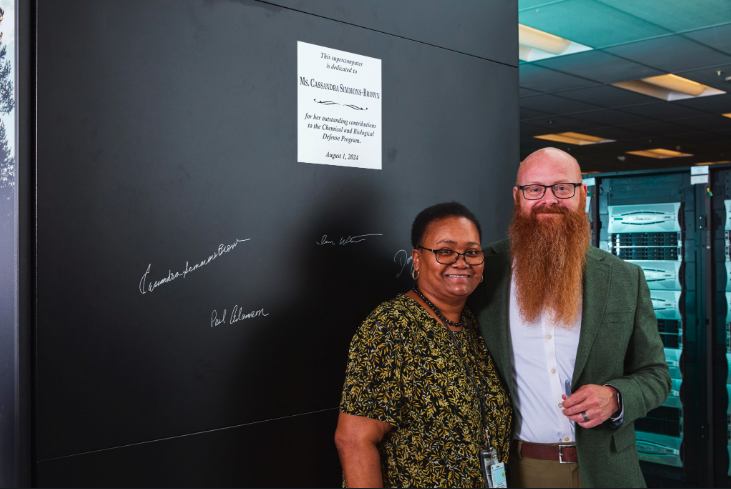New DOD supercomputer designed to thwart chem and bio threats

The Defense Department and National Nuclear Security Administration recently inaugurated a new supercomputer in California, via a joint pursuit envisioned to expand U.S. computing capacity and simultaneously generate additional chemical and biological defense capabilities.
Hosted at Lawrence Livermore National Laboratory, the system is funded by DOD’s Chemical and Biological Defense Program, and officials plan to soon open it up for use by the military, other federal agencies, allied and partner governments, and key collaborators in academic and industry.
“The name of the system is CASSIE,” a Pentagon spokesperson told DefenseScoop this week.
They confirmed that the system was named in honor of a DOD employee, but the spokesperson could not immediately identify that official.
However, according to a recent post on LinkedIn, “the supercomputer is named CASSIE in honor of Ms. Cassandra Simmons-Brown, the Principal Director of the Office of the DASD for Chemical and Biological Defense, for her 22 years (and counting) of service across the CBDP Enterprise.”
The platform will build upon and lean on the same architecture as Lawrence Livermore’s in-the-making exascale supercomputer, El Capitan. That system is projected to be the world’s most powerful when it becomes operational in the near future.
Many details on CASSIE’s hardware and specifications have not yet been shared, but a press release from Lawrence Livermore stated the system is equipped with AMD’s MI300A processors.
In DOD’s press release, officials wrote that CASSIE is expected to deliver “unique capabilities for large-scale simulation and AI-based modeling for a variety of defensive activities, including bio-surveillance, threat characterization, advanced materials development, and accelerated medical countermeasures.”
The department is broadly responsible for integrating vast amounts of data from a range of sources to provide early warning of biological and chemical threats, like anthrax or nerve agents.
“CASSIE will significantly expand our ability to understand patterns in the raw data (including combinations of data from different sources) and turn them into high-fidelity actionable intelligence. In order words, not only detecting something is amiss but identifying and characterizing the threat and forecasting impact on potential mission,” the Pentagon spokesperson told DefenseScoop.
“Early warning, identification, and characterization will provide the Joint Force with more defensive options and allow acquisition officials to rapidly develop and deliver medical countermeasures against novel threats,” they said.
When asked for a concrete example of what the new system offers to the Pentagon and its components, the official pointed to wearable technologies, such as smartwatches or rings that collect biomarkers, which they noted are “increasingly” worn by service members in recent years.
“DOD devised an algorithm that used wearable-collected biomarkers to alert to possible COVID-19 infection two days before symptoms appeared. Analyzing biomarker data with CASSIE will help us detect disease earlier and with greater precision, to include forecasting symptoms, intensity, duration, and transmissibility of various biothreats,” the spokesperson said.
They also highlighted other applications for the new supercomputer.
“CASSIE will be used to identify, design, and test advanced materials that will create personal protective gear that is more comfortable for the warfighter to operate in, longer-lasting, more effective against threats, and environmentally friendly,” the spokesperson said.
Additionally, the system will enable DOD officials “to better design, manufacture, and understand the safety of medical countermeasures (MCMs), which will rapidly accelerate MCM development against novel threats and ensure they can be manufactured at scale,” they noted.
The Pentagon did not confirm the total cost for CASSIE or provide a timeline for when it will be fully operational.



